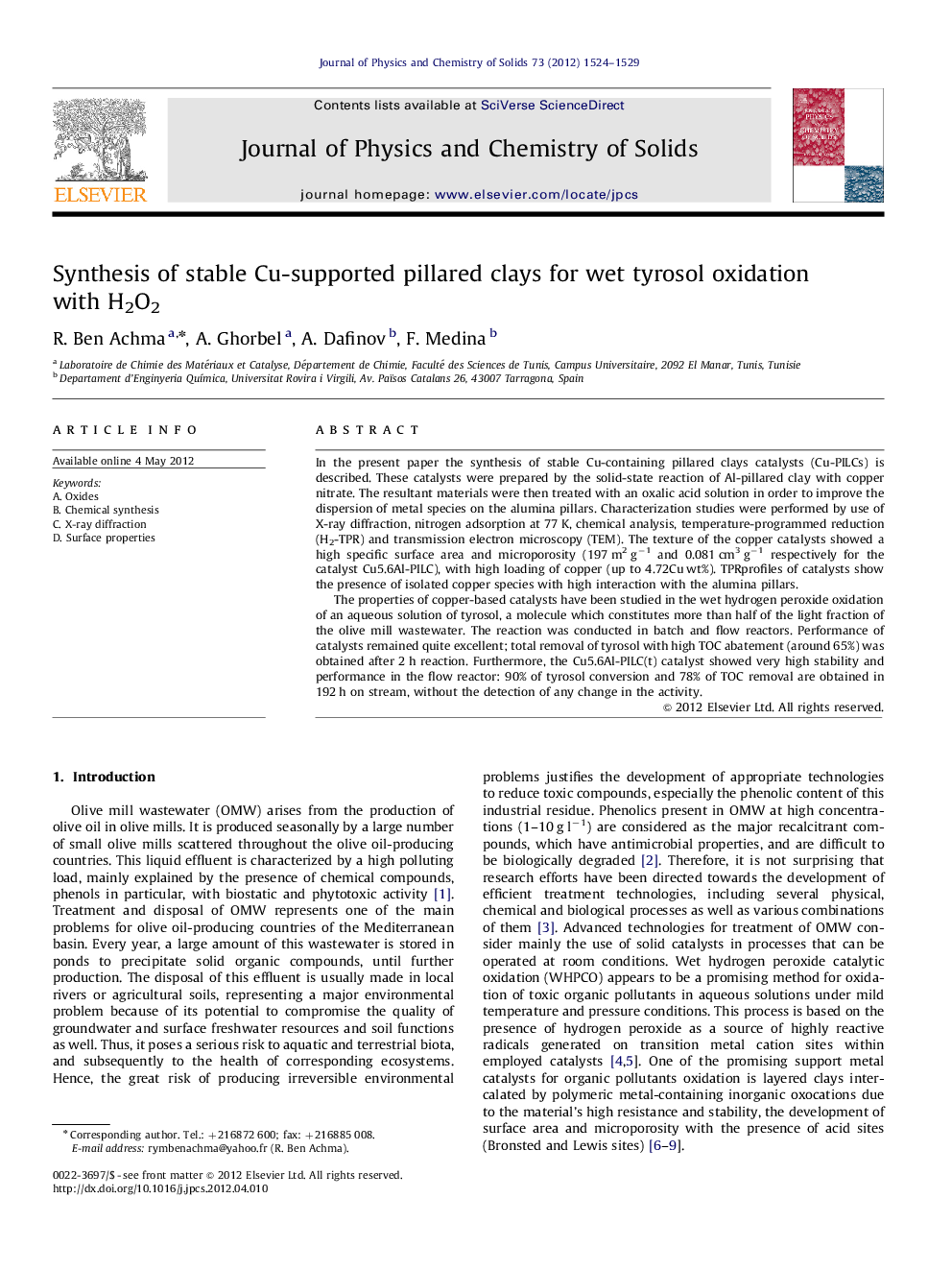| Article ID | Journal | Published Year | Pages | File Type |
|---|---|---|---|---|
| 1515847 | Journal of Physics and Chemistry of Solids | 2012 | 6 Pages |
In the present paper the synthesis of stable Cu-containing pillared clays catalysts (Cu-PILCs) is described. These catalysts were prepared by the solid-state reaction of Al-pillared clay with copper nitrate. The resultant materials were then treated with an oxalic acid solution in order to improve the dispersion of metal species on the alumina pillars. Characterization studies were performed by use of X-ray diffraction, nitrogen adsorption at 77 K, chemical analysis, temperature-programmed reduction (H2-TPR) and transmission electron microscopy (TEM). The texture of the copper catalysts showed a high specific surface area and microporosity (197 m2 g−1 and 0.081 cm3 g−1 respectively for the catalyst Cu5.6Al-PILC), with high loading of copper (up to 4.72Cu wt%). TPRprofiles of catalysts show the presence of isolated copper species with high interaction with the alumina pillars.The properties of copper-based catalysts have been studied in the wet hydrogen peroxide oxidation of an aqueous solution of tyrosol, a molecule which constitutes more than half of the light fraction of the olive mill wastewater. The reaction was conducted in batch and flow reactors. Performance of catalysts remained quite excellent; total removal of tyrosol with high TOC abatement (around 65%) was obtained after 2 h reaction. Furthermore, the Cu5.6Al-PILC(t) catalyst showed very high stability and performance in the flow reactor: 90% of tyrosol conversion and 78% of TOC removal are obtained in 192 h on stream, without the detection of any change in the activity.
► Calcination temperature of the clay support was reduced from 500 °C to 350 °C. ► A new step of treatment with an oxalic acid solution has been studied. ► Decreasing calcination temperature will increase the retention of Cu on the Alpillars. ► Isolated Cu2+ uniformly dispersed and strongly attached to the support is generated. ► Cu–Al–PILCs show superior catalytic activity and high stability in a flow reactor.
